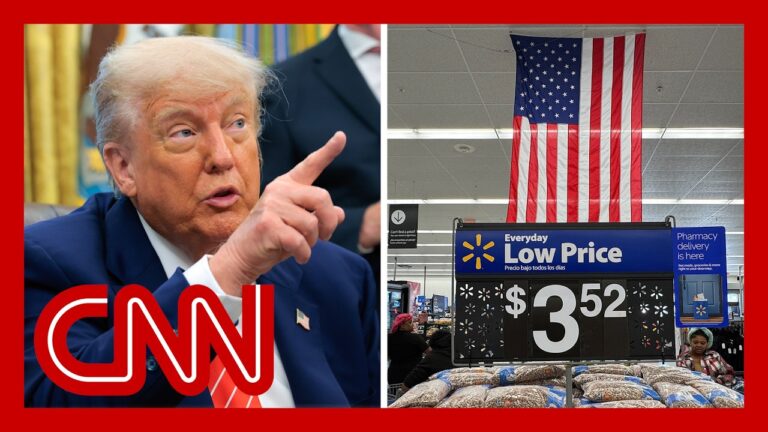Video at the bottom!
In recent comments, President Trump addressed Walmart’s announcement regarding price increases due to rising tariffs on imports, particularly from China. Trump insisted that Walmart should absorb these costs rather than pass them on to consumers, emphasizing that he would be monitoring the situation closely. With over 4,600 stores in the U.S. and being the country’s largest private employer, Walmart’s pricing decisions could significantly impact American consumers.
Augusta Saraiva, a Bloomberg News reporter, highlighted the dilemma for Walmart and similar businesses. As tariffs increase—ranging from 10% to 30% on certain imports—companies face a challenging choice: maintain lower prices to retain consumer demand or raise prices to protect their profit margins. Given that a significant portion of Walmart’s goods are subject to these tariffs, the company is in a precarious position. While Walmart aims to keep prices low for as long as possible, the potential for increased costs looms large, especially in an environment of declining consumer confidence and high inflation.
The repercussions of these tariffs are likely to affect low-income consumers the most, as they tend to allocate a larger portion of their income to essential goods. Higher prices could lead to shifts in consumer behavior, with shoppers potentially cutting back on non-essential purchases.
Jack Buffington, a supply chain management professor, discussed the financial implications for Walmart, noting that absorbing tariffs would be untenable since the company operates on slim profit margins. Smaller retailers could be hit harder since they lack the same financial resilience as large corporations like Walmart and Amazon.
Meanwhile, the Port of Los Angeles faces a notable slowdown in cargo shipments due to canceled sailings from China, leading to potential shortages of seasonal products like summer apparel and school supplies. Gene Seroka, the port’s executive director, indicated that while shipping activity is expected to pick up, ongoing uncertainty could lead to higher prices and fewer product choices for consumers in the coming months.
As companies navigate through fluctuating tariffs and supply chain challenges, the situation raises important questions about the broader implications for American retailers and the consumers who rely on them.


